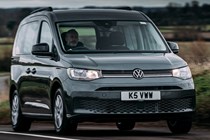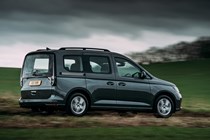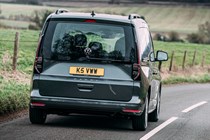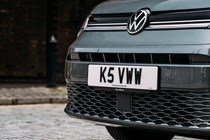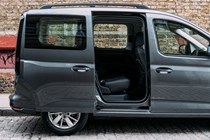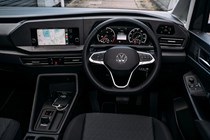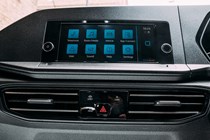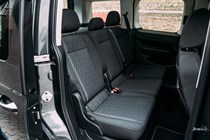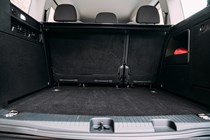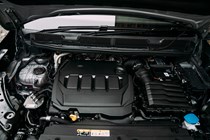
Volkswagen Caddy engines, drive and performance
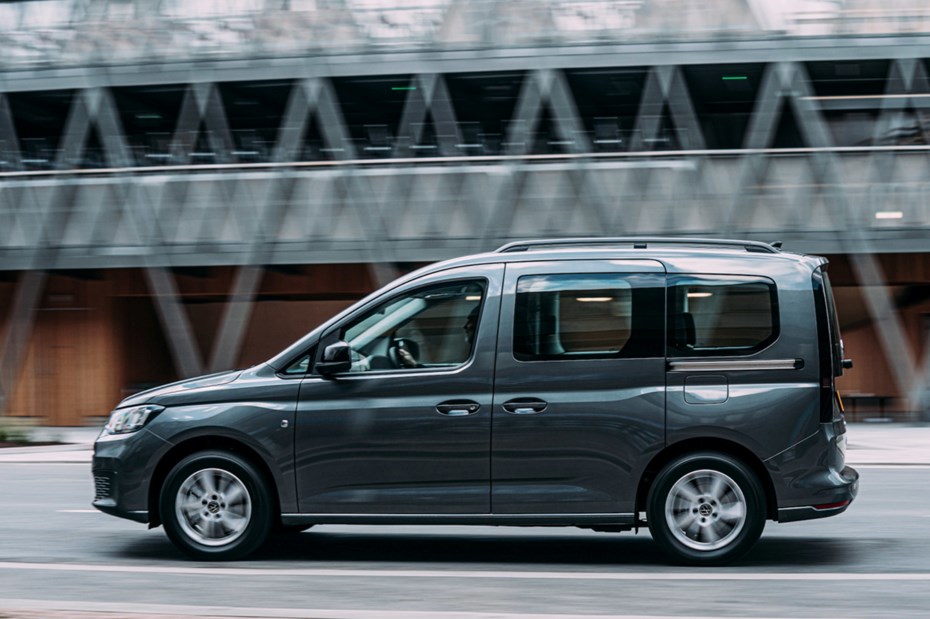
- Petrol and diesel power
- No pure electric version
- Diesel best all-rounder
Petrol engines
There’s only one conventional petrol in the current VW Caddy line-up. It’s a 116hp 1.5-litre TSI turbocharged unit that’s found in plenty of other VW products. It comes with a seven-speed DSG automatic transmission as standard,
If you don’t want to dabble with diesel, this engine is fine. It’s smooth and punchy enough when not weighed down by too much luggage. You may find it too weedy if you’re travelling five-up with a load in the boot all the time, but in our long-term test of a petrol-powered Caddy Life, reviewer Adam Binnie felt it ‘manages well enough when it’s full of people.’
Diesel engines
If you do longer journeys (and not many very short ones) and are often fully loaded, we think you’re almost certainly going to be better off with a diesel. The Caddy is available as a 2.0-litre TDI turbo with a choice of 102hp or 122hp. The first gets a six-speed manual gearbox, but the second is only available in combination with the seven-speed DSG automatic, which doubtless contributes to a chunky price different of around £3.5k.
The 102hp model is a comfortable cruiser, but the more powerful version is far more effortless when rammed full of stuff, helped by the extra ratio in what is a reasonably responsive – if not always super-smooth – automatic gearbox. Both should deliver over 40mpg without too much effort, but won’t be at their best if only used for short journeys around town.
A plug-in hybrid badged Caddy eHybrid has been announced in Europe, but is not yet confirmed for the UK.
What’s it like to drive?
- Height means it rolls in the corners
- But soft suspension delivers good comfort
- Feels like a Golf with middle-age spread
The Caddy people carrier is basically the same as the Caddy Cargo van, only with more seats and windows. But that van is based on the same platform as the current Volkswagen Golf, and as a result, this latest Caddy MPV is much more car-like to drive than previous models. It is, in fact and unsurprisingly, rather Golf-like – albeit in a slightly out of condition manner.
Compared with a regular family car – such as the Golf – it does roll around more in the corners. On roundabouts, for example, we found ourselves sliding around in the seat more than we’d usually expect, and there’s a softness to the Caddy’s responses that takes a little bit of readjustment. It’s not bad, just different. And similar to other van-based people carriers.
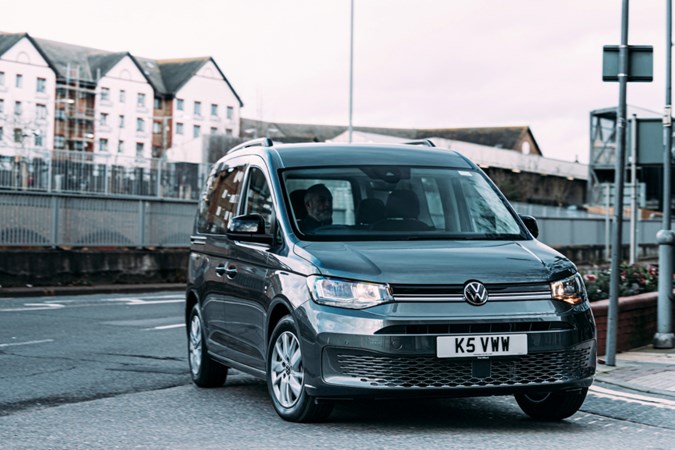
On the definite plus side, the ride is comfortable, with the Caddy doing a fine job of soaking up bumps in the road. This does make it a touch bouncy at lower speeds – such as when going over speed bumps – but it settles more as you go faster. For a family wagon, the compromise between comfort and dynamics makes sense to us, but it may leave more enthusiastic drivers feeling short-changed.
The manual gearbox in the least-powerful diesel is precise and car-like, so nice to use. The DSG autos fitted to the rest of the range are more relaxing in traffic as they do a good job of juggling the gears for you. These can feel lazy when pulling away from a standstill, but on the move they’re comfortably efficient, with a Sport setting available to sharpen up the shifts and hold on gears longer.
During our long-term test, however, Adam found that using Sport had quite a significant impact on fuel economy, and that when he switched back to the regular D setting the gearbox was still perfectly ‘fine’ for daily driving. So much so that he rarely found himself resorting to the manual shift paddles on the back of the steering wheel.


